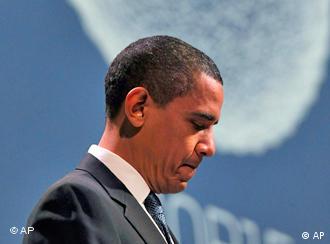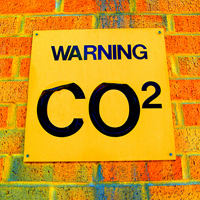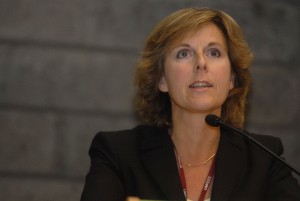Alexander Ochs, published as Worldwatch Institute blog
Many of us still remember the images from the Copenhagen climate summit in 2009, which was launched as “Hopenhagen” with great expectations and concluded in the “Flopenhagen” fiasco: the disappointment of freezing environmentalists lining up in front of the Bella Convention Center; the desperate faces of exhausted negotiators; the Danish sherpas trying to argue small successes in the summit’s failure.
But America’s political superstars would not succeed if they didn’t manage to emerge as winners, even in moments of defeat. U.S. president Barack Obama somehow thwarted the image of Europeans marked by the poor results of months of negotiations. Obama flew in to Copenhagen by helicopter, cut through the icy Scandinavian winds toward the conference venue, and assembled those around him whom he decided were the chosen few.
It is this other image that we conjure up when remembering Copenhagen: the U.S. president, with his sleeves rolled up, surrounded by the representatives of Brazil, China, India, and South Africa. The message: “We saved what could be saved.” But to anyone familiar enough with the negotiations to look behind the façade, this image actually showed those who had sabotaged the ambitious plans of Europeans and their coalition of “more willing but less mighty.” The picture was deceptive: What was rescued was not the climate, the environment, or sustainable development, but a minimal consensus to continue talking. After that, the world became relatively silent on climate diplomacy. But the talking did continue, and it led to much more progress than could have been expected shortly after Copenhagen.





 Lange Zeit sah es so aus, als ob die Klima-Karawane aus Regierungsdelegationen, Interessenvertretern und Umweltschützern nur auf der Stelle tritt. Beim letzten großen Zusammenkommen auf höchster Ebene im vergangenen Dezember wie auch bei den unzähligen Vorbereitungstreffen ging es so zaghaft voran, dass viele den UN-Klimagipfel schon abgeschrieben hatten.
Lange Zeit sah es so aus, als ob die Klima-Karawane aus Regierungsdelegationen, Interessenvertretern und Umweltschützern nur auf der Stelle tritt. Beim letzten großen Zusammenkommen auf höchster Ebene im vergangenen Dezember wie auch bei den unzähligen Vorbereitungstreffen ging es so zaghaft voran, dass viele den UN-Klimagipfel schon abgeschrieben hatten. From November 9 to 11, around 25 German and U.S. journalists and climate policy experts met at the Aspen Wye Conference Center on the Chesapeake Bay in Maryland to discuss the climate policy in Europe and the U.S. in view of the upcoming Copenhagen climate summit. The event was part of the Transatlantic Climate Bridge, and it not only aimed at providing journalists with the latest facts and figures on the summit but gave the participants the opportunity to exchange their views on the public debate in their respective countries, the status quo of the legislative process in Germany and the U.S., and the impact of climate change and respective policies on the economy and the international security, among others.
From November 9 to 11, around 25 German and U.S. journalists and climate policy experts met at the Aspen Wye Conference Center on the Chesapeake Bay in Maryland to discuss the climate policy in Europe and the U.S. in view of the upcoming Copenhagen climate summit. The event was part of the Transatlantic Climate Bridge, and it not only aimed at providing journalists with the latest facts and figures on the summit but gave the participants the opportunity to exchange their views on the public debate in their respective countries, the status quo of the legislative process in Germany and the U.S., and the impact of climate change and respective policies on the economy and the international security, among others.
 Half a year before the U.N. climate conference in Copenhagen, negotiators are far from agreeing on key components of a global climate deal. As envisioned in the 2007 Bali Climate Action Plan (or “Bali Roadmap”), the summit in December is supposed to deliver a follow-up agreement to the Kyoto Protocol under the United Nations Framework Convention on Climate Change (UNFCCC), which expires at the end of 2012.
Half a year before the U.N. climate conference in Copenhagen, negotiators are far from agreeing on key components of a global climate deal. As envisioned in the 2007 Bali Climate Action Plan (or “Bali Roadmap”), the summit in December is supposed to deliver a follow-up agreement to the Kyoto Protocol under the United Nations Framework Convention on Climate Change (UNFCCC), which expires at the end of 2012.